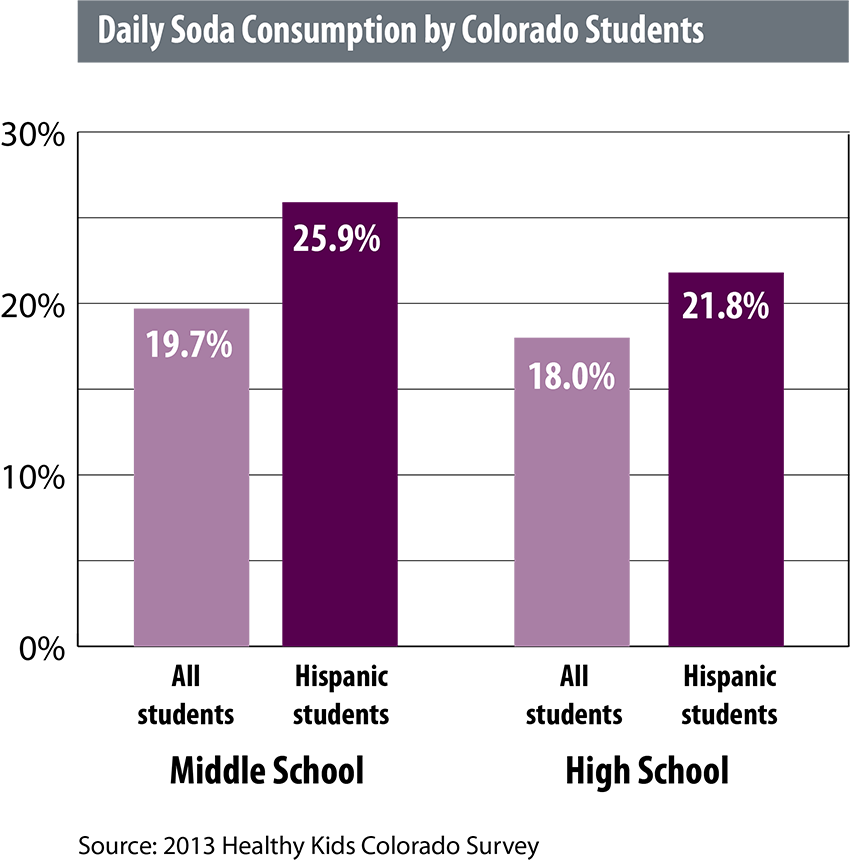Soda, pop, refrescos. Whatever you call them, popping open sugar-sweetened beverages contributes to childhood obesity in Colorado and nationwide.
Sugar-sweetened beverages (SSBs) refer to any drinks with added sugar, including non-diet soft drinks and sodas, flavored fruit juices, sports drinks, sweetened tea, refrescos, energy and coffee drinks and electrolyte replacement drinks like Gatorade.
The calories in sugar-sweetened beverages contribute to weight gain and provide little to no nutritional value. SSBs are the largest source of added sugars in the diet of U.S. youth, according to the Centers for Disease Control.
New federal regulations, under the Competitive Foods and Beverages rules of the Healthy Hunger Free Kids Act, restricts beverage sales to low-fat and nonfat milks, unsweetened teas, 100 percent fruit juice (which has its own problems with high sugar content) and diet beverages in high schools, with more stringent regulations for elementary and middle schools. While school administrators implement these new rules, students and families can still purchase sugary drinks off school grounds before and after the school bell rings.
But how much soda are kids in Colorado really drinking?
Nationwide, 27 percent of students drink at least one serving of non-diet soda per day. Colorado’s kids are healthier beverage consumers, with approximately 19 percent of middle and high school students drinking a soda daily.
However, SSB consumption is disproportionately high among Colorado’s Hispanic adolescents. Nationally, soda consumption rates are higher among white (29 percent) and African American (30.2 percent) students than their Hispanic counterparts (22.6 percent). But in Colorado, Hispanic students consume more sugary drinks than non-Hispanic students.
Unlike the national survey, which only asks about non-diet soda consumption, the 2013 Healthy Kids Colorado Survey takes into account the wide variety of sugary beverages, including diet sodas, sports drinks, energy drinks and other sugar-sweetened beverages like refrescos, sodas that come in a variety of flavors. For every category, Colorado’s Hispanic high schoolers outdrink their peers, with a higher percentage of Hispanic students drinking at least one of each type of SSB per day: diet soda (6.9 percent vs. 5.7 percent), sports drinks (14.2 percent vs. 11.5 percent), energy drinks (7.0 percent vs. 4.6 percent) and other sugar-sweetened beverages (17.5 percent vs. 15.1 percent).
While nearly one in 5 middle school and high school students drink soda daily in Colorado, 22 percent of Hispanic high schoolers and more than a quarter of Hispanic middle schoolers crack open a soda daily. Because SSBs contribute to added sugar consumption and weight gain, it’s not surprising that Hispanic high school students are also more likely to be obese or overweight (24.3 percent) than their white counterparts (21 percent).
Part 1 of our look at sugary drinks noted the high sugar content of 100 percent fruit juices.

